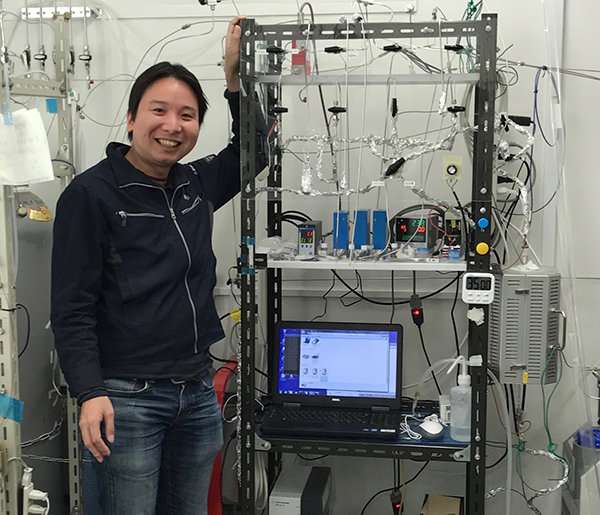Interdisciplinary interactions inspire new discovery

Following an interdisciplinary approach, researchers in Japan have found new catalysts using unique Heusler alloys. Most studies on catalysts have been conducted by researchers in chemistry. However, catalysts also relate to other research fields. For example, materials science, including metallurgy, also involves making and analyzing catalysts, and solid state physics is necessary to understand electronic structures with catalytic properties. Therefore, expertise from different fields is essential for catalytic studies.
Heusler alloys (formula: X2YZ) are very popular as magnetic (spintronic), thermoelectric, and shape memory materials. Although they are almost unknown as catalysts, they have great features: (1) many possible sets of X, Y, and Z enable the discovery of new catalysts; and (2) the possibility of elemental substitution (e.g. X2YZ1-xZ'x) enables the fine-tuning of catalytic properties.
Takayuki Kojima of Tohoku University, whose Ph.D. involved researching magnetic materials, conceived the use of Heusler alloys as catalysts, and has conducted the research with the An Pang Tsai research group that studies catalysts from a metallurgy viewpoint. They found good catalysts, Co2 (Mn or Fe) Ge, for selective hydrogenation of alkyne, based on feature 1. They also demonstrated the precise control of catalysis based on feature 2.
The new catalysts do not include precious noble metals, unlike industrial Pd-based catalysts. They may replace the Pd catalysts if the surface area is enlarged enough, for example, by making nanoparticles.
In addition, the tuning of catalysis by elemental substitution is hard to do in ordinary alloys. This discovery not only has practical advantages, but will also be useful for investigating mechanisms of catalysis on alloys that are still not fully revealed.
The team now aims to develop practical catalysts with large surface areas and to reveal the mechanisms of good performance in depth. "We believe that this study will inspire many researchers in all related fields to try to find good Heusler catalysts for various reaction processes," said Kojima.
More information: Takayuki Kojima et al, Catalysis-tunable Heusler alloys in selective hydrogenation of alkynes: A new potential for old materials, Science Advances (2018). DOI: 10.1126/sciadv.aat6063
Journal information: Science Advances
Provided by Tohoku University



















